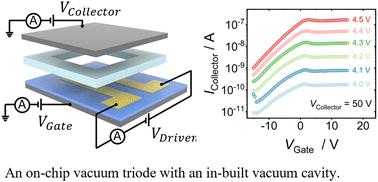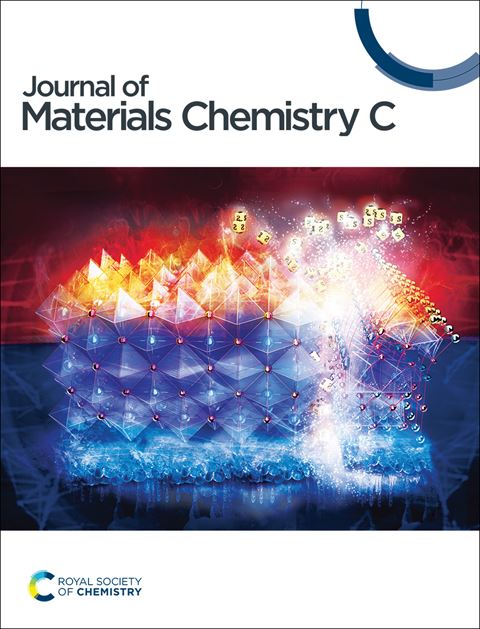An on-chip vacuum triode based on thermionic electron emission from super-aligned carbon nanotube films
IF 5.7
2区 材料科学
Q2 MATERIALS SCIENCE, MULTIDISCIPLINARY
引用次数: 0
Abstract
An on-chip vacuum triode based on thermionic electron emission from suspended super-aligned carbon nanotube films is realized via microfabrication technology. The device employs a multilayer-stacked structure with an in-built vacuum cavity that separates the thermionic electron source and the collector electrode. The wafer-scale fabricated thermionic electron source exhibits an emission current of up to 200 μA with an emission density of 6.7 A cm−2. To switch the emission current from the electron source to the collector electrode, the heavily doped silicon substrate underneath suspended carbon nanotubes works as the gate electrode, achieving an on/off current ratio of 102 and a subthreshold slope of ∼7 V dec−1. Additionally, the vacuum triode exhibits good tolerance to harsh environments of high or low temperature and X-ray radiation. All these properties make the miniaturized vacuum triode a device with potential for application in harsh environments.

基于超对齐碳纳米管薄膜热电子发射的片上真空三极管
通过微加工技术实现了一种基于悬浮超对齐碳纳米管薄膜热电子发射的片上真空三极管。该器件采用多层堆叠结构,内置真空腔体,将热离子电子源和集电极隔开。晶圆级热离子电子源的发射电流高达 200 μA,发射密度为 6.7 A cm-2。为了将发射电流从电子源切换到集电极,悬浮碳纳米管下的重掺杂硅衬底充当了栅极,实现了 102 的导通/关断电流比和 7 V dec-1 的阈下斜率。此外,真空三极管对高温、低温和 X 射线辐射等恶劣环境具有良好的耐受性。所有这些特性使微型真空三极管成为一种具有在恶劣环境中应用潜力的器件。
本文章由计算机程序翻译,如有差异,请以英文原文为准。
求助全文
约1分钟内获得全文
求助全文
来源期刊

Journal of Materials Chemistry C
MATERIALS SCIENCE, MULTIDISCIPLINARY-PHYSICS, APPLIED
CiteScore
10.80
自引率
6.20%
发文量
1468
期刊介绍:
The Journal of Materials Chemistry is divided into three distinct sections, A, B, and C, each catering to specific applications of the materials under study:
Journal of Materials Chemistry A focuses primarily on materials intended for applications in energy and sustainability.
Journal of Materials Chemistry B specializes in materials designed for applications in biology and medicine.
Journal of Materials Chemistry C is dedicated to materials suitable for applications in optical, magnetic, and electronic devices.
Example topic areas within the scope of Journal of Materials Chemistry C are listed below. This list is neither exhaustive nor exclusive.
Bioelectronics
Conductors
Detectors
Dielectrics
Displays
Ferroelectrics
Lasers
LEDs
Lighting
Liquid crystals
Memory
Metamaterials
Multiferroics
Photonics
Photovoltaics
Semiconductors
Sensors
Single molecule conductors
Spintronics
Superconductors
Thermoelectrics
Topological insulators
Transistors
 求助内容:
求助内容: 应助结果提醒方式:
应助结果提醒方式:


